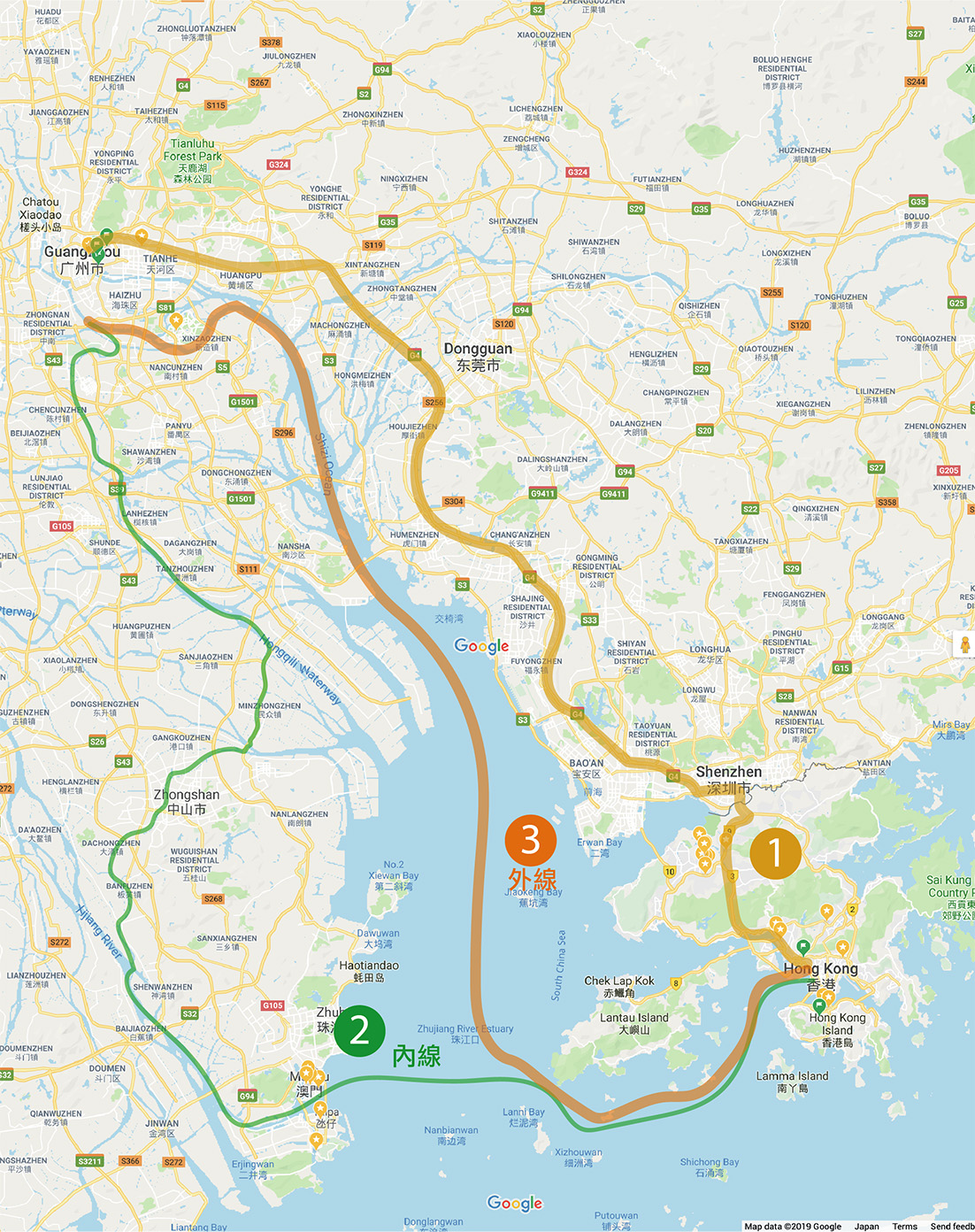←Displacement
‘Repatriation Policy’ routes
- TypeMap
- Time2019
- SourceCartography
- CopyrightLee Kai Chug
After the fall of Guangzhou in 1938, large numbers of refugees from Guangzhou and Southern China flooded into Hong Kong; within a few months, Hong Kong's population grew to nearly 1.6 million. In 1942, Hong Kong was also occupied. The Imperial Japanese governor of Hong Kong then introduced a 'Repatriation Policy', which aimed to reduce the population of Hong Kong by half in order to ease the cost of governance and diminish the demand for food and water. As a result, hundreds of thousands of Hong Kong people were forced or lured to cities and villages in Guangdong Province. Some of them were imprisoned in the Nanshitou Refugee Camp located at the estuary of the Pearl River outside Canton City (Guangzhou).
The Occupation Government provided three 'repatriation' routes from Hong Kong to Guangzhou, which is 129 kilometres away:
- The Eastern Line (on foot) - Traveling from Hong Kong Island via the Kowloon Peninsula, across the Shenzhen River to Guangzhou via the Mainland;
- The Western Line (by boat and on foot) - Traveling from Hong Kong to Macau by boat, then by land via Zhuhai north to Guangzhou;
- The Central Line (by boat) - Traveling from Hong Kong by boat around Lantau Island, then heading north via the Pearl River Estuary to Nanshitou, Guangzhou.
